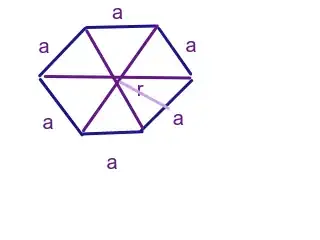I'm calculating with triangle to prove area of a circle. I start with a rectangle and I have 4 triangles in it.
Area of a rectangle can be calculated by $ S = 4 (\frac12 r a) $
$$2r = a \Rightarrow r = \frac12 a $$
$$S = 4(\frac12ra) = 2ra = a^2$$

Area of Hexagonal is $ S = 6 (\frac12 r a) $
I name $n$ for triangles count $$S = n (\frac12 r a) $$ With adding triangles, the shape goes to be a circle:
Area of the circle is: $$S = \lim_{n\to ∞} \frac{n r a}{2} $$
How can I mathematically prove that: $$\lim_{n\to ∞} \frac{n r a}{2} = \pi r^2$$
Or if possible: $$\lim_{n\to ∞} \frac{n a}{2r} = \pi$$
